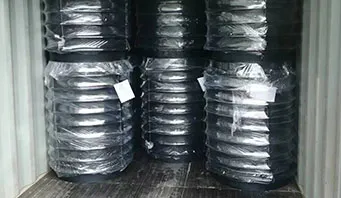
Dec . 05, 2024 15:02 Back to list
types of industrial steam boilers
Types of Industrial Steam Boilers
Steam boilers are essential components in various industrial processes, providing the necessary heat and energy for heating, power generation, and many other applications. The type of steam boiler selected largely depends on the specific requirements of the industry, including operational efficiency, fuel type, capacity, and operational pressure. This article outlines the main types of industrial steam boilers, their features, advantages, and applications.
1. Fire-Tube Boilers
Fire-tube boilers are among the most common types of steam boilers used in industrial applications. In a fire-tube boiler, hot gases from a combustion source pass through tubes that are submerged in water, heating the water and producing steam. This type of boiler is characterized by its simplicity and ease of maintenance.
Advantages - Lower initial cost compared to water-tube boilers. - Simple design and operation, making them easy to maintain. - Suitable for low to medium steam generation.
Applications Fire-tube boilers are often used in smaller industrial settings, such as food processing, textiles, and smaller manufacturing plants where the steam demand is not exceptionally high.
2. Water-Tube Boilers
In contrast to fire-tube boilers, water-tube boilers circulate water through tubes that are heated externally by flue gases. This design allows for higher pressure and efficiency, leading to quicker steam generation. Water-tube boilers are generally used for larger industrial applications.
Advantages - Can generate steam at higher pressures and temperatures. - More efficient due to greater heat transfer. - Greater control over steam quality and production.
Applications Water-tube boilers are widely used in power generation, chemical processing, and large-scale manufacturing facilities that require a substantial amount of steam.
3. Electric Steam Boilers
Electric steam boilers use electricity to generate steam. They convert electrical energy into heat, which is then used to produce steam. These types of boilers are gaining popularity due to their efficiency and lower emissions compared to traditional fuel-based boilers.
types of industrial steam boilers

Advantages - Clean operation with no emissions. - High efficiency and quick response time to changing steam demands. - Minimal maintenance required.
Applications Electric steam boilers are ideally suited for facilities where a small amount of steam is required, such as in laboratories, hospitals, and some manufacturing processes.
4. Biomass Boilers
Biomass boilers use organic materials such as wood pellets, agricultural waste, or other biological matter as fuel. These boilers can be fire-tube or water-tube designs and are often considered a more sustainable option compared to fossil fuel boilers.
Advantages - Reduced environmental impact due to the use of renewable resources. - Can often qualify for government incentives or subsidies. - Lower operational costs when biomass fuel is readily available.
Applications Biomass boilers are commonly used in industries looking to reduce carbon footprint, such as food processing, pulp and paper, and even in district heating systems.
5. Composite Boilers
Composite boilers combine both fire-tube and water-tube technologies. They are designed to use waste heat from other processes or fuels alongside traditional firing methods. This hybrid design improves efficiency and flexibility in operations.
Advantages - High efficiency due to combined heat recovery. - Versatile and can operate on multiple fuels. - Enhanced steam reliability and quality.
Applications Composite boilers are often found in industries that have varying steam requirements and need to optimize energy use, such as in marine applications and combined heat and power (CHP) plants.
Conclusion
Choosing the right type of industrial steam boiler is crucial for maximizing efficiency and ensuring consistent performance. Each boiler type has its own set of advantages and applications, making it necessary for industries to analyze their steam requirements carefully. As industries continue to evolve and emphasize sustainability, innovative solutions such as biomass and electric steam boilers may become increasingly important. Understanding the different types of steam boilers available can lead to better decisions in energy management and operational practices, ultimately contributing to improved efficiency and reduced environmental impact.
-
High-Efficiency Commercial Oil Fired Steam Boiler for Industry
NewsJul.30,2025
-
High-Efficiency Biomass Fired Thermal Oil Boiler Solutions
NewsJul.30,2025
-
High Efficiency Gas Fired Thermal Oil Boiler for Industrial Heating
NewsJul.29,2025
-
High-Efficiency Gas Fired Hot Water Boiler for Sale – Reliable & Affordable
NewsJul.29,2025
-
High Efficiency Biomass Fired Hot Water Boiler for Industrial and Commercial Use
NewsJul.29,2025
-
High-Efficiency Biomass Fired Hot Water Boiler for Industrial Use
NewsJul.28,2025
Related PRODUCTS






















